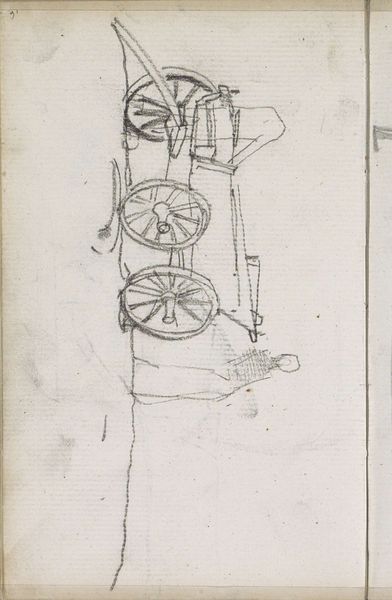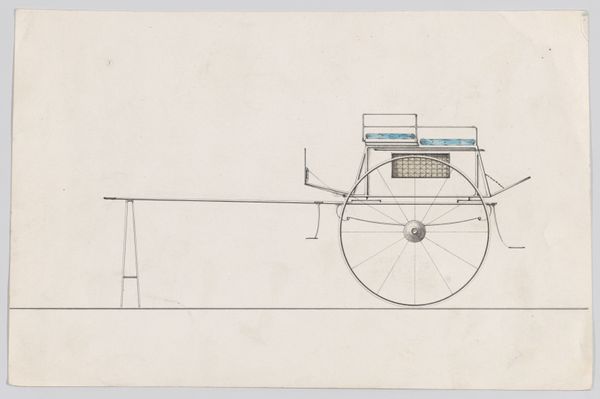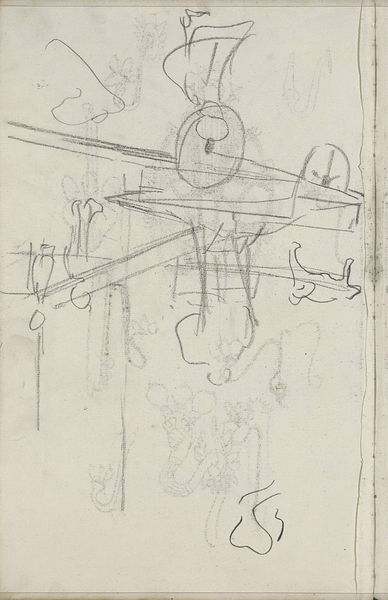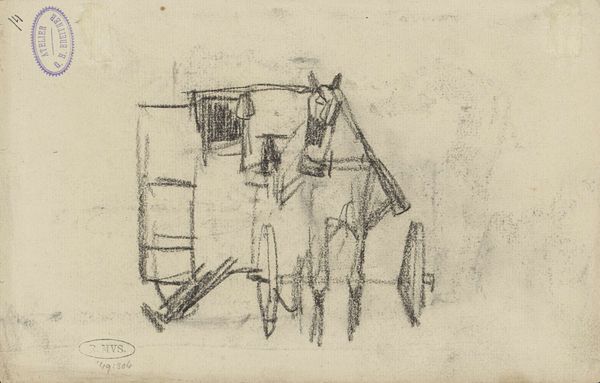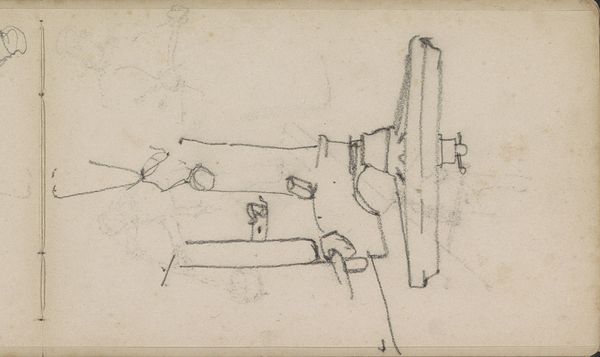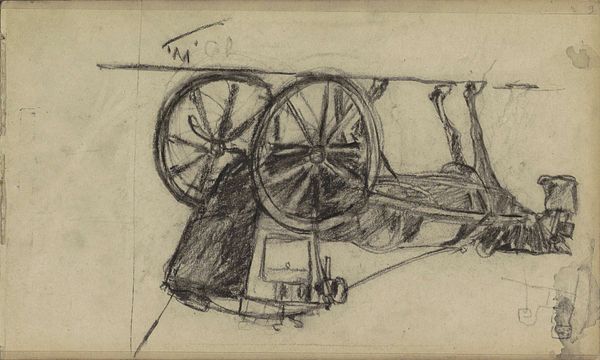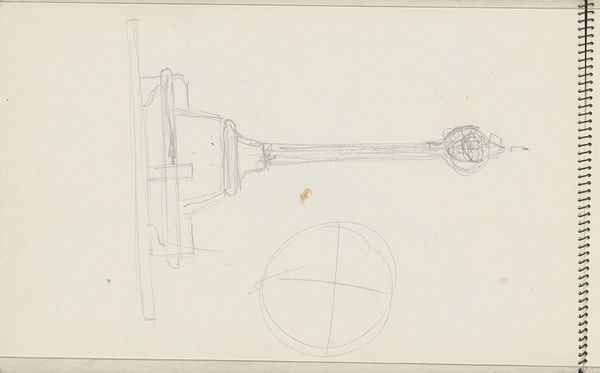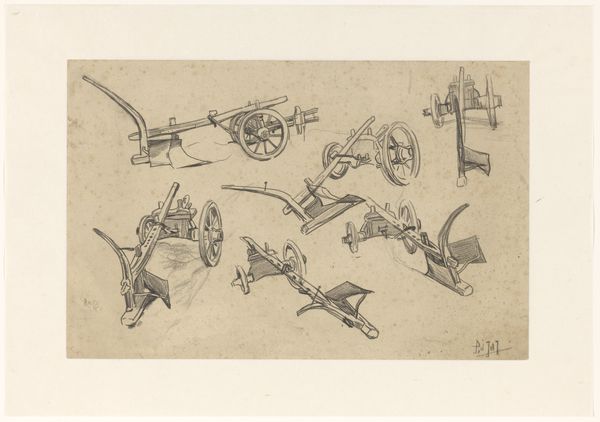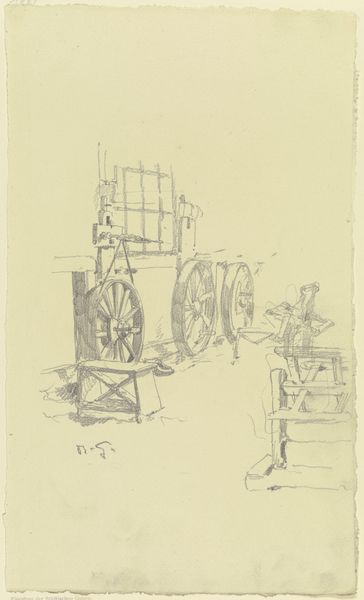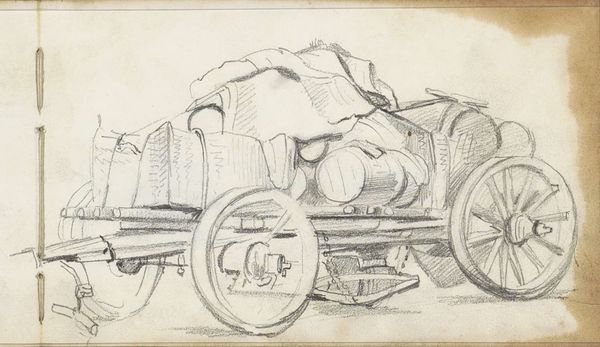
drawing, paper, pencil
#
drawing
#
light pencil work
#
quirky sketch
#
paper
#
personal sketchbook
#
idea generation sketch
#
sketchwork
#
ink drawing experimentation
#
pen-ink sketch
#
pencil
#
sketchbook drawing
#
storyboard and sketchbook work
#
sketchbook art
#
realism
Dimensions: height 240 mm, width 329 mm
Copyright: Rijks Museum: Open Domain
Editor: So, here we have "Studies van een ploeg" or "Studies of a plow," by Johannes Abraham Mondt, likely created sometime between 1869 and 1941. It’s a pencil and ink drawing on paper. It looks like sketches from a notebook. What stands out to me is how utilitarian it is; it depicts tools and laborers of farm work. How might we interpret it? Curator: Precisely! It's tempting to simply see these as preliminary sketches, but let’s delve into the materiality and process. Consider the repetitive nature of both the drawn lines and the plow's function itself. Mondt chose simple materials. Paper, pencil, ink: accessible tools reflecting, in a way, the accessibility of the farm work itself. How does the seemingly rushed nature of the sketch speak to the urgent demands of agricultural labor? Editor: That’s interesting; the rushed sketches remind me of the daily routines of farm work, it's like an everyday snapshot. And now I also think about what kind of paper and tools were available and widely used at the time. Curator: Exactly. The type of paper, the grade of pencil, were all dictated by the economic realities and mass production techniques of the time. Do you think Mondt intended for this study to exist as an art object in itself, or merely as a step toward something else? The sketches were done as realism. Editor: That's a good point. Perhaps it wasn't intended for display. These are studies after all, made with easily sourced, readily available material! More to think about it now! Curator: Indeed. Thinking about the artist's choice of ordinary tools and their study in simple, honest materials and forms, what more do we learn about it? Editor: Right. It tells us the importance of simple, available, and utilitarian objects found and consumed around that period. Curator: I agree; by thinking through the lens of materials, tools, and context, this piece tells an intriguing story of a world and society around that period.
Comments
No comments
Be the first to comment and join the conversation on the ultimate creative platform.


